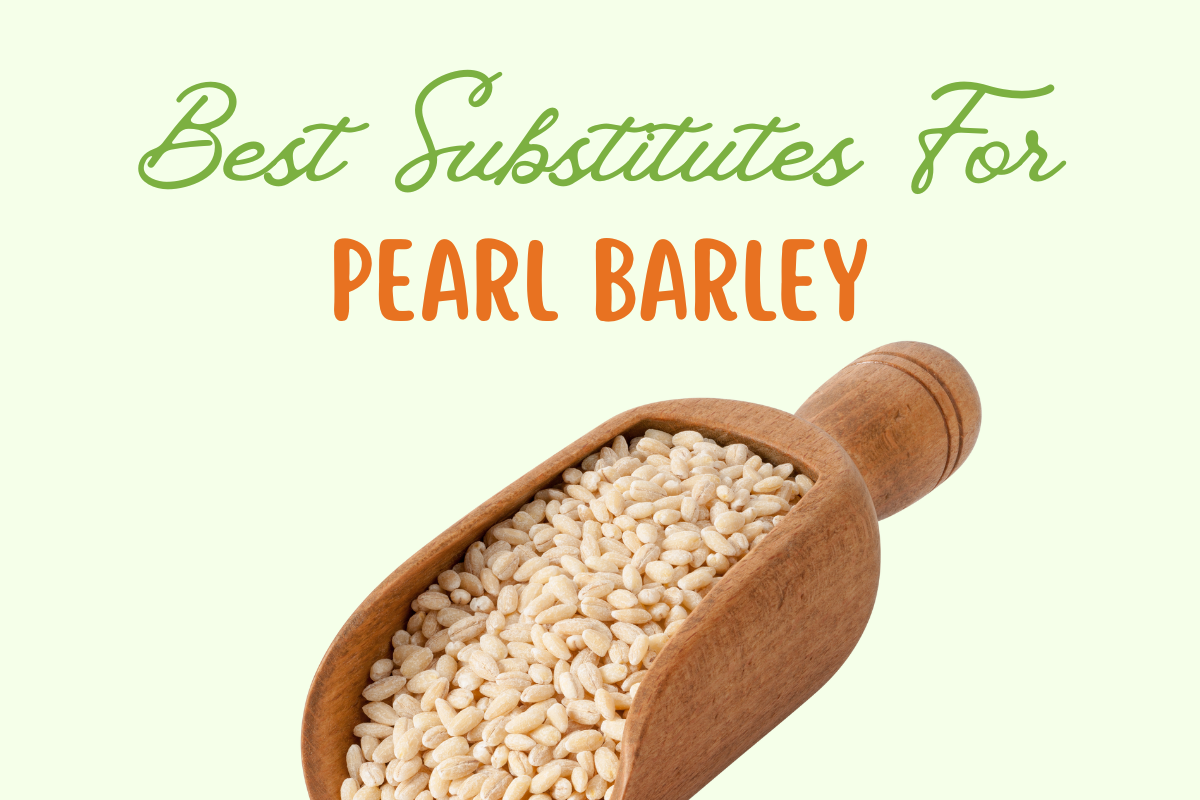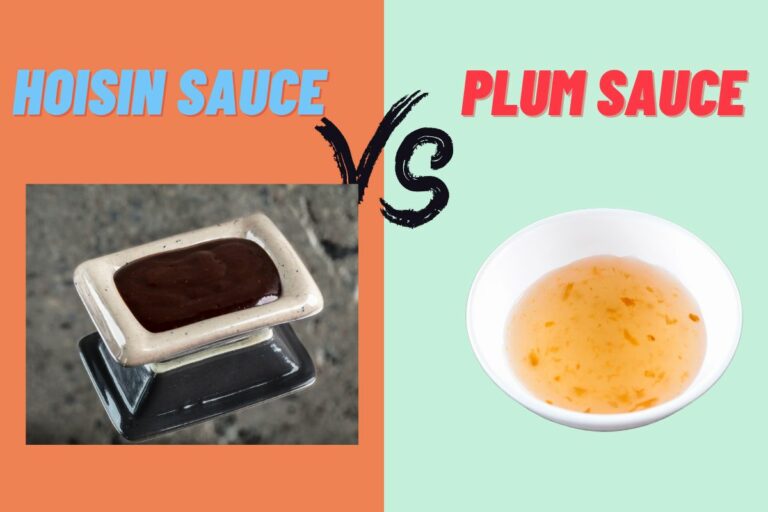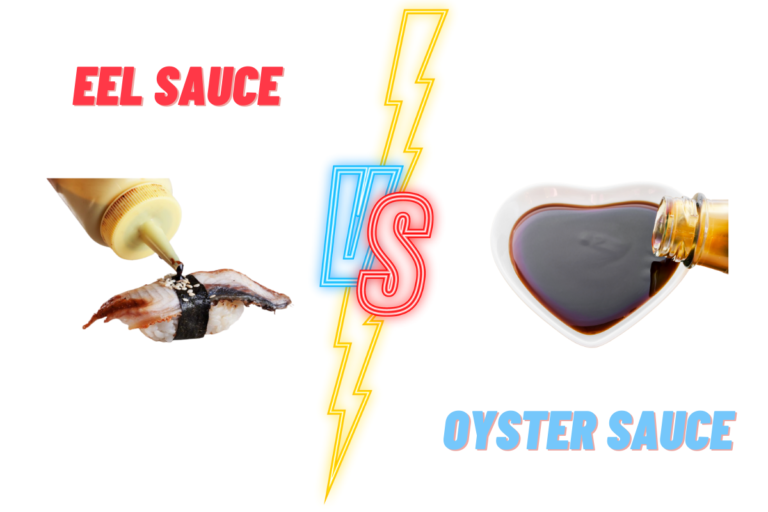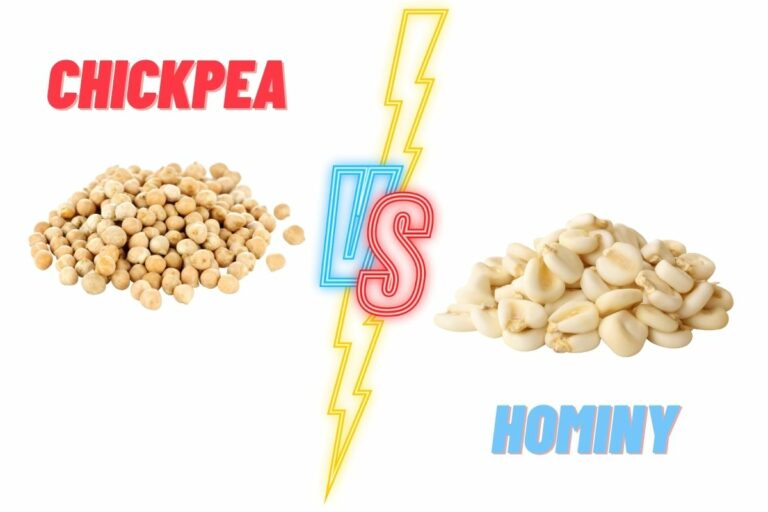Best Substitutes For Pearl Barley
Ever found yourself mid-recipe, only to realize you’re out of pearl barley? This versatile grain is a star ingredient in many dishes, owing to its nutty flavor and hearty texture. But worry not – our handy guide will introduce amazing alternatives that are equally delicious and easy-to-cook.
Let’s dive into the world of grains together and transform your next meal!
Comparison Table
In this section, the substitutes for pearl barley will be compared in terms of their nutritional values, texture, and flavor.
Here is a detailed comparison presented in a table format:
| Barley Substitute | Nutritional Value | Texture | Flavor |
| Farro | High in fiber and protein | Chewy | Nutty |
| Quinoa | High in protein and antioxidants | Light and fluffy | Mild, nutty |
| Buckwheat | Rich in antioxidants, fiber, and protein | Soft | Earthy, nutty |
| Brown Rice | Rich in vitamins, fiber, and minerals | Firm | Nutty |
| Millet | High in protein, fiber, and antioxidants | Soft | Mild, sweet |
| Sorghum | High in fiber and protein | Chewy | Mild, sweet |
| Couscous | Rich in protein and fiber | Light and fluffy | Mild |
| Bulgur Wheat | High in fiber, protein, and minerals | Chewy | Slightly nutty |
| Pearl Couscous | Rich in fiber and protein | Chewy | Neutral, slightly nutty |
The table above provides a quick reference to help decide the best substitute for pearl barley depending on the dish’s required texture, flavor, and nutritional needs.
The Importance of Substitutes for Pearl Barley
Substitutes for pearl barley are important for those with dietary restrictions, allergies, or simply looking to change up their recipes.
Reasons for needing substitutes
Whether dietary restrictions, health focus, or availability is at play, having substitute options for pearl barley becomes necessary. For instance, those with gluten intolerance would opt for buckwheat or brown rice as they are gluten-free alternatives to barley.
On the other hand, some individuals may seek substitutes like quinoa and millet for their high protein content in pursuit of specific nutritional goals. In certain scenarios, the reason could be as simple as not having pearl barley in your pantry and needing a speedy replacement such as couscous which offers quick cooking time.
Therefore, understanding suitable substitutes can greatly enhance culinary experiences while accommodating diverse diets and preferences.
Considerations when choosing a substitute
Choosing the best substitute for pearl barley greatly depends on several factors. You’ll need to take into account your dietary needs, as some substitutes like buckwheat and brown rice are gluten-free while others aren’t.
Taste and texture also play a pivotal role in the selection process. For instance, quinoa provides a mild, nutty flavor similar to barley while farro’s texture is extremely compatible with soups much like pearl barley.
The dish you’re creating can also influence your choice of alternative; couscous makes a great addition to salads and pilafs, whereas sorghum works wonders in stews due its use in various recipes akin to pearl barley.
Moreover, consider nutritional value such as protein content in millet or high fiber content of bulgur wheat when selecting an appropriate stand-in for pearl barley.
Barley Substitutes for Soups and Stews
For soups and stews, some great substitutes for pearl barley include farro, brown rice, millet, sorghum, and even corn kernels.
Farro
Farro, a nutrient-rich grain that’s packed with protein, fiber, and vitamins A and B, has earned its place as one of the best substitutes for pearl barley. The similarity between farro’s robust nutty flavor profile to that of barley makes it ideal for recipe swaps without sacrificing taste or compromising on distinct flavor.
Its versatility comes into play when incorporated in several recipes; from hearty soups to refreshing salads and even baked goods. Plus, like barley, it lends itself well to slow-cooking methods such as stews or risottos while maintaining a satisfyingly chewy texture.
Whether you’re hunting down alternatives due to dietary restrictions or looking for an exciting new ingredient to experiment with in your home kitchen – Farro is certainly worth considering!
Brown rice
Brown rice is a nutritious substitute for pearl barley that offers a gluten-free option for those with dietary restrictions. With its slightly chewy texture and nutty flavor, it can be used in both savory and sweet recipes.
Brown rice is an excellent source of fiber, providing more than double the amount found in pearl barley. It also contains essential minerals like manganese and selenium, as well as B vitamins.
Whether you use it in soups, stews, or salads, brown rice is a versatile substitute that adds wholesome goodness to your dishes.
Millet
Millet is a versatile grain that can be used as a substitute for pearl barley in various dishes such as pilafs, salads, and porridge. It has a mild flavor with a slightly nutty taste, making it compatible with different ingredients and seasonings.
Millet is also gluten-free, making it suitable for those with dietary restrictions. In terms of nutrition, millet offers a good amount of protein and fiber content, promoting satiety and aiding digestion.
With its versatility and nutritional benefits, millet is an excellent alternative to pearl barley in many recipes.
Sorghum
Sorghum is a gluten-free grain that serves as an excellent substitute for pearl barley in various dishes such as soups, stews, and salads. It has a mild flavor that complements both savory and sweet recipes.
In terms of nutritional content, sorghum is rich in protein, fiber, vitamins, and minerals. This versatile grain can be cooked similarly to pearl barley with a water-to-grain ratio of 1:3 and can provide a chewy texture to your dishes.
Whether you’re looking for gluten-free options or simply want to try something different, sorghum is definitely worth considering as a substitute for pearl barley.
Corn kernels
Corn kernels can be a tasty substitute for pearl barley in a variety of dishes. With their slightly sweet flavor and satisfying crunch, they add a unique twist to soups, stews, salads, and pilafs.
Corn kernels are rich in fiber and contain beneficial nutrients like vitamin C and folate. They can easily be cooked by boiling or grilling and retain their bright yellow color and crisp texture.
Whether you’re looking for a gluten-free option or simply want to switch up your recipes, corn kernels make an excellent substitute for pearl barley.
Barley Substitutes for Salads and Pilafs
– Quinoa offers a high protein content and a mild, nutty taste, making it a popular substitute for barley in salads and pilafs.
Quinoa
Quinoa is a popular substitute for pearl barley due to its high protein content and mild, nutty taste. It is a versatile grain that can be used in a variety of dishes like salads, pilafs, and side dishes.
Quinoa cooks quickly and has a fluffy texture when cooked properly. Additionally, quinoa is gluten-free, making it suitable for those with gluten sensitivities or celiac disease. With its nutritional benefits and adaptable flavor profile, quinoa is an excellent choice when looking for a substitute for pearl barley in your recipes.
Couscous
Couscous is a quick-cooking substitute for pearl barley that can be used in a variety of dishes, such as salads, pilafs, and side dishes. It has a light and fluffy texture with a slightly nutty flavor.
Couscous is made from semolina wheat, making it a good source of carbohydrates and providing some protein content. It cooks quickly by simply adding hot water or broth and letting it steam for a few minutes until tender.
This versatile grain alternative is a great option for those looking to add some variety to their meals or who may have dietary restrictions such as gluten-free diets.
Bulgur wheat
Bulgur wheat is a high-fiber substitute for pearl barley that is commonly used in Middle Eastern and Mediterranean cuisine. It has a slightly nutty flavor and a chewy texture, making it a great addition to salads, pilafs, and side dishes.
Bulgur wheat also offers numerous health benefits as it is rich in fiber, protein, vitamins, and minerals. This versatile grain can be easily cooked by boiling it in water or broth until tender.
With its heartiness and nutritional value, bulgur wheat is an excellent alternative to pearl barley in various recipes.
Buckwheat
Buckwheat is a gluten-free alternative to pearl barley that can be used in a variety of dishes like soups, salads, and porridge. It has a slightly nutty flavor and adds a unique texture to your meals.
Buckwheat is also packed with nutrients, including fiber, protein, and several vitamins and minerals. It cooks relatively quickly compared to other grains, making it convenient for busy weeknight dinners.
Whether you’re looking to add some variety to your soups or create a hearty salad, buckwheat is an excellent substitute for pearl barley.
Teff
Teff is a nutritious and gluten-free substitute for pearl barley that offers its own unique flavor profile. This ancient grain has gained popularity in recent years due to its high iron and calcium content, making it a great choice for those looking to boost their nutrient intake.
Teff can be used in a variety of dishes like soups, stews, and salads, adding a slightly sweet and nutty taste. It cooks quickly and has a delicate texture, making it an excellent substitute for those who want to add something different to their recipes while still enjoying the health benefits of whole grains.
How to Use Barley Substitutes
To use barley substitutes, follow the cooking instructions provided for each grain and use the appropriate water-to-grain ratio for desired texture.
Cooking instructions
To cook farro as a substitute for pearl barley:
- Rinse the grains under cold water.
- In a saucepan, combine 1 cup of farro with 2 ½ cups of water or broth.
- Bring to a boil, then reduce heat and simmer for about 30 minutes or until the farro is tender but still chewy.
- Drain any excess liquid before using in your recipe.
- Rinse the rice under cold water.
- In a saucepan, combine 1 cup of brown rice with 2 cups of water or broth.
- Bring to a boil, then reduce heat and cover. Simmer for about 45 minutes or until the rice is tender and all the liquid has been absorbed.
- Rinse the millet under cold water.
- In a saucepan, combine 1 cup of millet with 2 cups of water or broth.
- Bring to a boil, then reduce heat and simmer for about 20 minutes or until the millet is fluffy and fully cooked.
- Rinse the sorghum under cold water.
- In a saucepan, combine 1 cup of sorghum with 3 cups of water or broth.
- Bring to a boil, then reduce heat and simmer for about an hour or until the sorghum is tender. You may need to adjust cooking time depending on the variety of sorghum used.
- Rinse the quinoa under cold water to remove its bitter coating called saponin.
- In a saucepan, combine 1 cup of quinoa with 2 cups of water or broth.
- Bring to a boil, then reduce heat and cover. Simmer for about 15 – 20 minutes or until the quinoa is tender and the liquid has been absorbed.
- In a saucepan, bring 1 cup of water or broth to a boil.
- Remove from heat and stir in 1 cup of couscous. Cover and let sit for about 5 minutes or until the couscous has absorbed all the liquid.
- Fluff with a fork before using in your recipe.
- In a saucepan, combine 1 cup of bulgur wheat with 2 cups of water or broth.
- Bring to a boil, then reduce heat and simmer for about 10 minutes or until the bulgur is tender and all the liquid has been absorbed.
- Rinse the buckwheat under cold water.
- In a saucepan, combine 1 cup of buckwheat with 2 cups of water or broth.
- Bring to a boil, then reduce heat and cover. Simmer for about 20 minutes or until the buckwheat is tender and the liquid has been absorbed.
- Rinse the teff under cold water.
- In a saucepan, combine 1 cup of teff with 3 cups of water or broth.
- Bring to a boil, then reduce heat and simmer for about 20 minutes or until the teff is tender. You may need to
Water-to-grain ratios
When using barley substitutes in your recipes, it’s important to know the water-to-grain ratios to ensure proper cooking. For example, when cooking farro as a substitute for pearl barley, you’ll typically use 2 cups of water for every 1 cup of grain.
Quinoa, on the other hand, requires a ratio of 2 cups of water for every 1 cup of quinoa. Brown rice and millet generally follow the same ratio as farro at 2 cups of water per 1 cup of grain.
It’s essential to check specific instructions on the packaging or recipe for accurate measurements as they may vary slightly.
Nutritional Comparison of Barley Substitutes
Barley substitutes offer various nutritional benefits, with options like quinoa providing high protein content and millet offering a good source of fiber.
Protein content
Farro, quinoa, and buckwheat are excellent substitutes for pearl barley when it comes to protein content. Farro is known for its high protein content, providing about 7 grams per serving.
Quinoa is another grain that offers a good amount of protein, with approximately 8 grams per serving. Buckwheat also contains a decent amount of protein, with around 6 grams per serving.
These substitutes not only provide the necessary nutrients but also add a tasty and satisfying element to your dishes. So if you’re looking to boost your protein intake while enjoying delicious meals, these options are worth considering as alternatives to pearl barley.
Fiber content
Each of the substitutes for pearl barley mentioned in this blog post have varying fiber contents. Brown rice, for example, is a great source of dietary fiber, with 1 cup providing about 3.5 grams.
Quinoa also offers a good amount of fiber, with approximately 2.8 grams per cooked cup. Farro contains about 5 grams of fiber per cooked cup and millet provides around 1 gram per cooked cup.
Sorghum is another option that is high in fiber, offering roughly 6 grams per cooked cup. These alternatives to pearl barley can help increase your daily intake of this important nutrient and support digestive health.
Vitamin and mineral content
Each barley substitute has its own unique nutritional profile, offering a variety of vitamins and minerals. While pearl barley is known for its high fiber content, other substitutes also provide similar health benefits.
For example, quinoa is rich in protein and contains essential amino acids, while brown rice is a good source of manganese and selenium. Millet is packed with magnesium and phosphorus, sorghum offers iron and potassium, and buckwheat provides B-complex vitamins like niacin and thiamine.
By incorporating these substitutes into your meals, you can enjoy a range of nutrients that support overall health and well-being.
Flavor and Texture Profile of Barley Substitutes
The flavor and texture of barley substitutes vary, with some having a nutty taste like farro and quinoa, while others offer a chewier texture like couscous and bulgur wheat.
Similarities and differences
The substitutes for pearl barley have their own unique flavors and textures, each bringing something different to a dish. Farro offers a similar nutty flavor profile as barley, making it an excellent substitute in recipes.
Quinoa provides a mild, nutty taste and adds protein to dishes. Brown rice is gluten-free like barley and can be used in both savory and sweet recipes. Millet is another versatile grain that can be used in place of pearl barley in pilafs, salads, or even porridge.
Sorghum is also a gluten-free option that works well in soups, stews, or salads. These substitutes offer similar nutritional benefits but add their own delicious twist to any recipe.
Which substitutes work best in specific dishes
Farro is a fantastic substitute for pearl barley in soups and stews, thanks to its nutty flavor and chewy texture that adds depth to these hearty dishes. Quinoa, on the other hand, works well in salads and pilafs, offering a high protein content and a mild, nutty taste that complements various ingredients.
Brown rice is a versatile substitution that can be used in both sweet and savory recipes, while millet shines in pilafs and porridge-like dishes. Sorghum provides a gluten-free option for soups, stews, and salads with its slightly sweet flavor.
Bulgur wheat pairs perfectly with Middle Eastern or Mediterranean-inspired dishes like tabbouleh or stuffed peppers. With these substitutes, you can easily adapt your favorite recipes without compromising taste or nutritional value.
Conclusion
In conclusion, there are plenty of great substitutes for pearl barley that can be used in a variety of dishes. Whether you’re looking for a nutty flavor, gluten-free option, or increased protein content, options like farro, quinoa, and brown rice have got you covered.





